Nearly 70% of businesses globally have adopted VoIP or UCaaS solutions, reflecting a compound annual growth rate of over 15% in this market. Remote and hybrid work models have surged, pushing companies to rethink their communication infrastructure. Choosing between SIP trunking and Cloud PBX isn’t just a tech decision, it influences agility, cost, and competitive edge.
Business leaders face mounting pressure from digital transformation, mergers and acquisitions, and legacy system retirements. Opening new offices or supporting a dispersed workforce demands communication that adapts quickly without draining resources.
This guide arms decision-makers with practical insights to navigate these changes. It breaks down each approach’s strategic fit, helping companies plan infrastructure that aligns with growth and evolving work patterns. Whether expanding geographically or shifting to hybrid operations, selecting the right voice platform shapes operational success.
Key Takeaways
- SIP trunking connects existing PBX systems to the public phone network over IP, offering more control and better ROI over time for businesses with established infrastructure.
- Cloud PBX delivers a fully managed, scalable virtual phone system ideal for remote teams and fast-growing organizations, deployable in days with minimal IT overhead.
- Cost structures differ: SIP has moderate CapEx and long-term savings; Cloud PBX is OPEX-based with predictable per-user pricing but potential feature overages.
- Control vs. convenience trade-off: SIP trunking offers tighter data governance and compliance handling, while Cloud PBX reduces IT burden and supports UCaaS out of the box.
- Hybrid deployments (SIP + Cloud PBX) offer the best of both worlds, enabling HQ-level control with cloud agility for branch or remote offices.
SIP Trunking vs Cloud PBX
Choosing the right communication platform depends on understanding how each option fits your existing setup and future goals. SIP trunking and Cloud PBX represent two distinct approaches, each with practical advantages based on infrastructure, control, and deployment needs. Let’s break down their core differences to help you decide which suits your business best.
SIP Trunking in One Paragraph
SIP trunking delivers digital telephone lines over IP, connecting your existing PBX hardware to public phone networks. It lets businesses leverage prior investments while consolidating voice and data on a single network pipe. Ideal for companies aiming to retain local PSTN access or maintain in-house call routing, SIP trunking supports gradual upgrades without full infrastructure overhaul.
Cloud PBX in One Paragraph
Cloud PBX offers a fully virtualized phone system managed by a third-party provider. It operates on an operational expense model, eliminating upfront hardware costs. Rapid deployment and centralized management suit distributed teams, enabling seamless remote work and easier scaling. Cloud PBX shifts responsibility for updates and maintenance off your internal IT, providing convenience and agility.
Summary Table – Tech Comparison
| Feature | SIP Trunking | Cloud PBX |
| CapEx | Medium | Low |
| Control | High | Medium |
| Deployment Time | Weeks | Days |
| Ideal For | Infrastructure reuse | Scalability + Remote work |
| Dependency | Internal IT | External Provider |
The Economics Behind Each Model
Understanding the financial impact helps decision-makers align communication choices with business goals. Both SIP trunking and Cloud PBX come with distinct cost structures that scale differently as your organization grows. Assessing these models through ownership, subscription, and hidden costs reveals which approach delivers better value over time.
Ownership vs Subscription Cost Models
SIP trunking usually involves moderate capital expenses, often $25 to $50 per trunk per month, plus ongoing PBX maintenance. Cloud PBX follows a subscription model averaging $15 to $30 per user monthly, covering system upkeep and upgrades.
Costs shift depending on team size and call concurrency. Smaller, distributed teams often favor Cloud PBX due to predictable per-user fees and minimal upfront investment. Larger organizations with heavy call volumes may find SIP trunking more cost-effective, especially when reusing existing PBX infrastructure. Over a 3- to 5-year horizon, total cost of ownership for SIP can be lower if you manage in-house resources efficiently.
Avoiding Hidden Costs
Cloud PBX expenses can rise unexpectedly through premium features or seat overages, which some vendors add without clear upfront disclosure. On the SIP side, costs often emerge from maintaining PBX hardware, setting up failover, and managing IT overhead for network stability.
Planning for these hidden expenses upfront prevents budget surprises and ensures operational continuity.
ROI Timeline Calculator (Optional Visual Aid)
For a 50-user business, switching to Cloud PBX may yield ROI within 6 to 9 months, thanks to rapid deployment and low upfront spend. SIP trunking ROI typically spans 9 to 18 months, depending on existing PBX asset utilization and IT management efficiency.
A balanced evaluation weighing initial investment, monthly fees, and scalability needs supports smarter budgeting aligned with growth plans.
Architecture, Control, and Resilience
Choosing between SIP trunking and Cloud PBX requires weighing control against convenience. Each model shapes your communication infrastructure differently, affecting compliance, risk, and uptime. Understanding these factors helps align your voice strategy with business priorities and regulatory demands.
Infrastructure Control and Risk
SIP trunking relies on local hardware, giving full control over systems but increasing responsibility. You manage security, updates, and compliance protocols. This suits organizations needing tight data governance or specific audit trails, like finance or healthcare.
Cloud PBX shifts management to a third-party provider, offering convenience and reducing internal IT burdens. However, vendor lock-in and reliance on external policies may complicate compliance with standards like GDPR or HIPAA. Reviewing provider transparency around data handling proves critical.
Uptime, Redundancy, and Disaster Recovery
Cloud PBX vendors typically promise uptime of 99.999%, backed by multiple data centers and automatic failover. Their resilience depends heavily on vendor infrastructure and internet connectivity.
SIP trunking demands proactive failover setups, such as dual ISPs, Session Border Controllers (SBCs), or LTE backups. These enable rerouting calls during outages but require ongoing management.
Local routing offers quicker recovery options, whereas cloud redundancy depends on vendor capabilities and network reach. Both models must be evaluated for disaster recovery alignment with organizational risk tolerance.
Integration Ecosystems and Futureproofing
Communication systems rarely operate in isolation. They must mesh smoothly with customer relationship management (CRM), enterprise resource planning (ERP), and helpdesk tools. Integration streamlines workflows, improves data accuracy, and supports evolving business demands. Choosing a voice solution with future-ready compatibility safeguards investments as technology landscapes shift.
Compatibility with CRMs, ERPs, and Helpdesk Tools
Cloud PBX solutions typically include prebuilt connectors for platforms like Salesforce, HubSpot, Zendesk, and Microsoft Teams. These native integrations simplify call logging, customer insights, and support ticket creation, reducing manual work.
SIP trunking, connected to legacy PBX hardware, often requires middleware or custom development for integration. While this adds upfront complexity, it allows organizations to maintain existing systems while gradually modernizing workflows.
Unified Communications Strategy Alignment
Cloud PBX usually forms part of a broader UCaaS (Unified Communications as a Service) platform, bundling voice, video, messaging, and collaboration in one package. This unified approach suits remote and hybrid teams needing seamless, multi-channel communication.
SIP trunking tends to focus on voice services alone unless extended with additional PBX integrations. This can limit unified communications capabilities but offers control for organizations prioritizing voice quality and existing infrastructure reuse.
Use Cases: When to Choose What
Selecting the right communication system depends heavily on your organization’s unique needs. Understanding when to choose SIP trunking, cloud PBX, or a hybrid approach helps avoid costly mistakes. Each option fits distinct scenarios and industries, balancing control, cost, and flexibility.
When SIP Trunking Wins
SIP trunking suits businesses with significant investments in existing PBX hardware. It supports complex internal call routing and meets strict national telecom regulations.
Industries like finance, healthcare, and manufacturing often prefer SIP trunking due to compliance requirements and in-house system integration. It enables reuse of infrastructure while connecting seamlessly to modern IP networks.
When Cloud PBX Wins
Cloud PBX shines for startups, multi-location organizations, and hybrid or remote-first teams. Its rapid deployment and centralized management simplify scaling across sites.
Sectors such as technology, marketing agencies, real estate, and customer support centers benefit from cloud PBX’s flexible, subscription-based model. It reduces IT overhead and accelerates onboarding for dispersed teams.
Hybrid Deployments (SIP + Cloud PBX)
Many enterprises combine SIP trunking at headquarters with cloud PBX for remote or branch offices. This approach blends control with agility, preserving infrastructure while embracing cloud benefits.
Some providers offer integrated solutions that manage both SIP and cloud environments under one platform, easing administration and future migrations.
Common Mistakes Businesses Make
Choosing between SIP trunking and Cloud PBX comes with pitfalls that can undermine costs, performance, and user experience. Avoiding these missteps saves money and stress.
Mistake: Assuming Cloud PBX auto-scales without cost implications.
What Happens: Unexpected seat-based fees surge as user counts rise.
What to Do Instead: Audit seat utilization quarterly and adjust licenses accordingly.
Mistake: Not calculating concurrent call demand before choosing SIP trunk volume.
What Happens: Call drops or blocked connections during peak hours.
What to Do Instead: Use busy-hour call rate modeling to size SIP channels accurately.
Mistake: Overlooking PBX maintenance costs with SIP trunking.
What Happens: IT overhead balloons, eroding expected savings.
What to Do Instead: Factor in ongoing maintenance, updates, and failover systems in the budget.
Mistake: Neglecting network readiness for SIP trunking.
What Happens: Poor call quality due to bandwidth or latency issues.
What to Do Instead: Conduct thorough network assessments and upgrade where necessary before deployment.
Mistake: Choosing providers without clear SLAs or fraud protection.
What Happens: Service interruptions and potential financial losses from toll fraud.
What to Do Instead: Verify provider SLAs, 24/7 support, and built-in security features before signing contracts.
These avoidable errors can derail communication upgrades. Addressing them upfront ensures smoother transitions and better ROI.
Final Checklist — How to Evaluate the Right Fit
Choosing between SIP trunking and Cloud PBX requires a clear framework. Use this checklist to weigh critical factors and align your communication system with business goals.
| Criteria | Considerations | Impact on Decision |
| Team Size | Small (<50), Medium (50–250), Large (>250) | Larger teams often favor Cloud PBX for scalability. |
| Office vs Remote Ratio | Percentage of remote/hybrid workers | Higher remote ratios lean toward Cloud PBX’s centralized control. |
| Compliance Needs | HIPAA, GDPR, PCI-DSS, industry-specific standards | SIP trunking may offer stronger on-premise compliance control. |
| IT Staffing | In-house IT capabilities and bandwidth | Limited IT favors Cloud PBX; robust teams can manage SIP trunking. |
| Integration Requirements | CRM, ERP, Helpdesk tools, UC platforms | Cloud PBX often provides prebuilt integrations; SIP may need custom work. |
| Growth Expectations | Planned expansions or contractions | Cloud PBX suits rapid scaling; SIP trunking fits stable or slow growth. |
Each variable affects cost, control, and complexity differently. Score each based on your priorities to find the right balance. Download the decision matrix template to customize your evaluation.
Using this structured approach reduces guesswork and helps secure communications that fit both current needs and future ambitions. Contact DIDlogic for more information.
Further Reading
- What is SIP trunking?
- SIP trunking capacity
- SIP trunking security
- Differences between SIP trunking and telephony
- Differences between SIP trunking and IP trunking
- SIP session vs SIP trunk
- Differences between SIP Trunking and Session Border Controllers
- SIP Trunking vs PSTN
- SIP Trunking vs H.323
- Advantages of SIP Trunking
- SIP Trunk Costs
- SIP Trunking Migration Plan
- SIP Trunking Requirements










